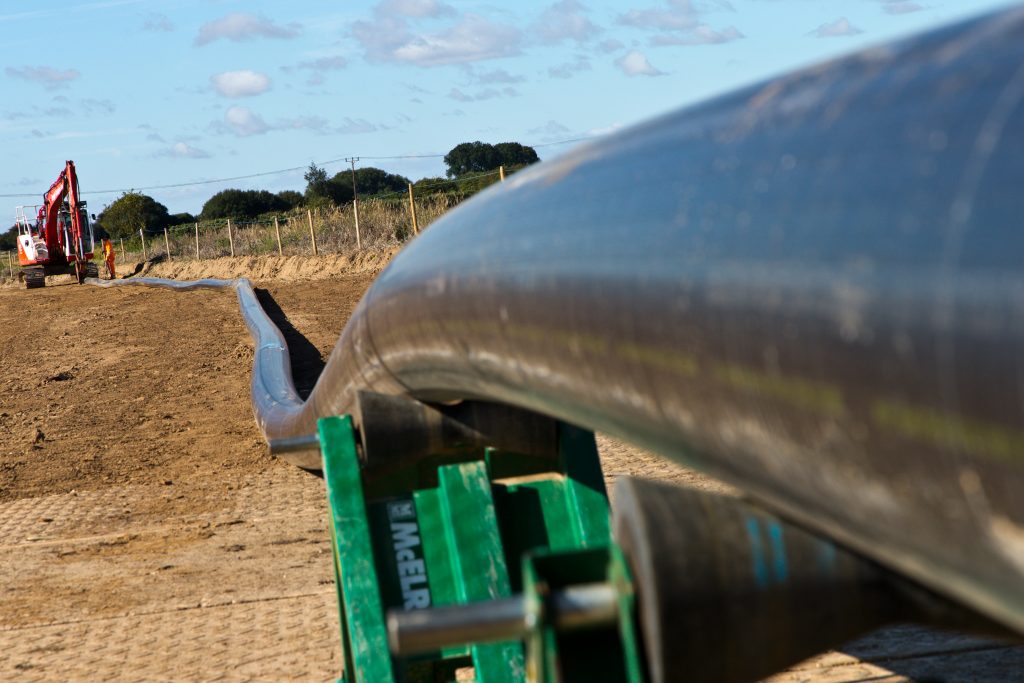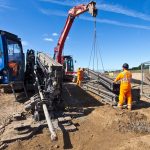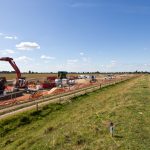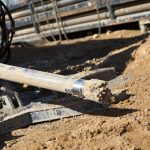Overview
Full construction of the onshore cable route began in September 2018 combining trenched excavations, the installation of ducting and Horizontal Directional Drilling (HDD). HDDs are critical to installation, ensuring we avoid obstacles like roads and watercourses. There are over 700 HDDs being installed at 147 separate drilling locations along the route, and which we believed is the most recorded for an infrastructure project of this kind in the UK.
Principle Contractor: J Murphy & Sons Ltd (JMS)
Expected completion: Mid-2021
Progress updates
Reinstatement of the 57km onshore cable route and landfall has also now reached completion and, in most areas, you can’t see any evidence construction works took place!
The Triton Knoll onshore cable route was a record breaking project. Firstly, the route is the longest electrical cable route of any offshore wind farm in Europe. Secondly, the works involved the completion of Horizontal Directional Drills (HDDs) at 146 separate locations, resulting in 774 individual drills, and this is the most ever undertaken on a UK infrastructure project.
In total, we avoided more than 300 obstacles (roads, rivers, railway tracks etc.) as a result of using the HDD technique which dramatically reduced the impact of construction works on the local community.
Ongoing landscaping and hedgerow maintenance at locations along the onshore cable route will be managed by Dobson UK as part of the wider Landscaping and Maintenance contract.
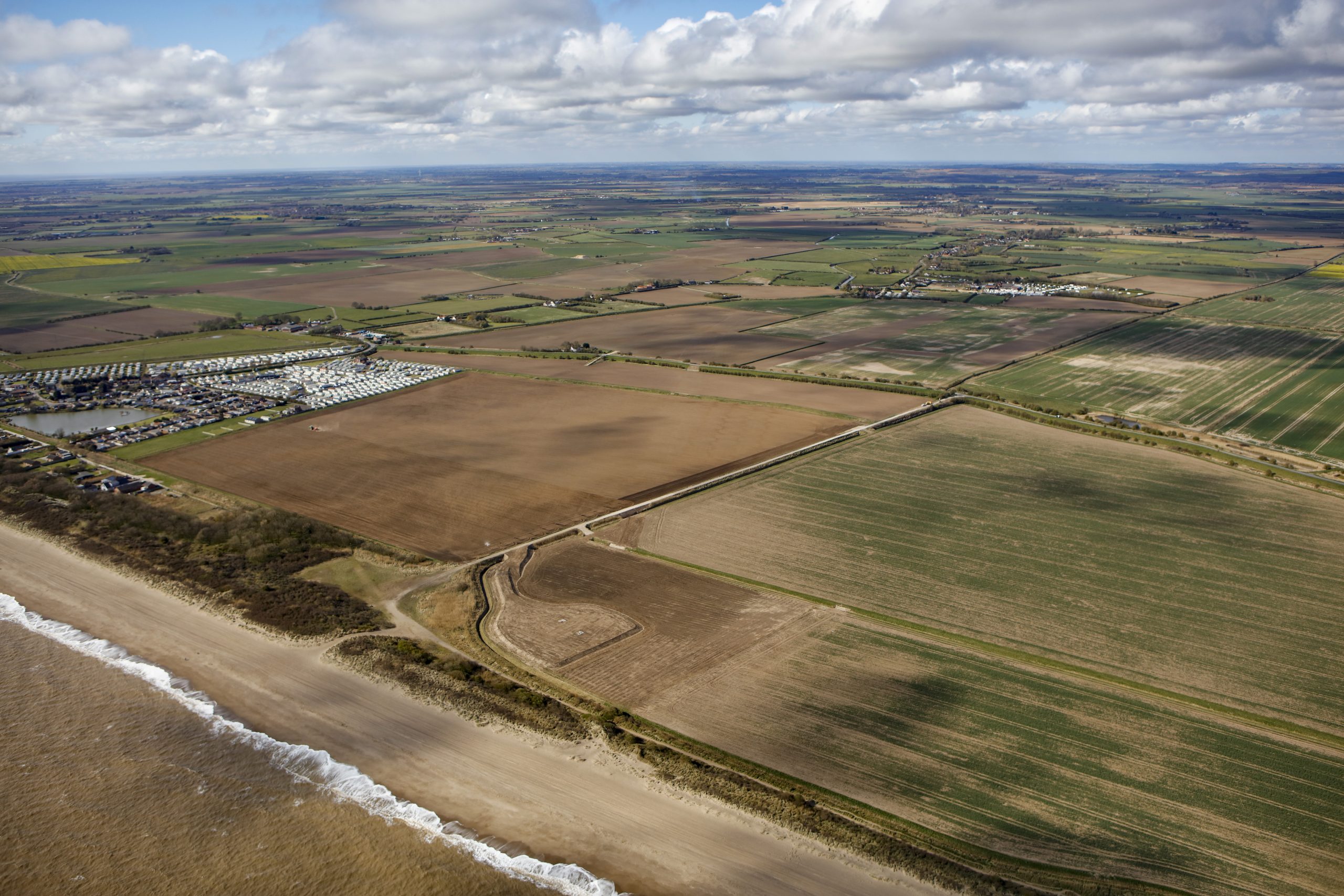
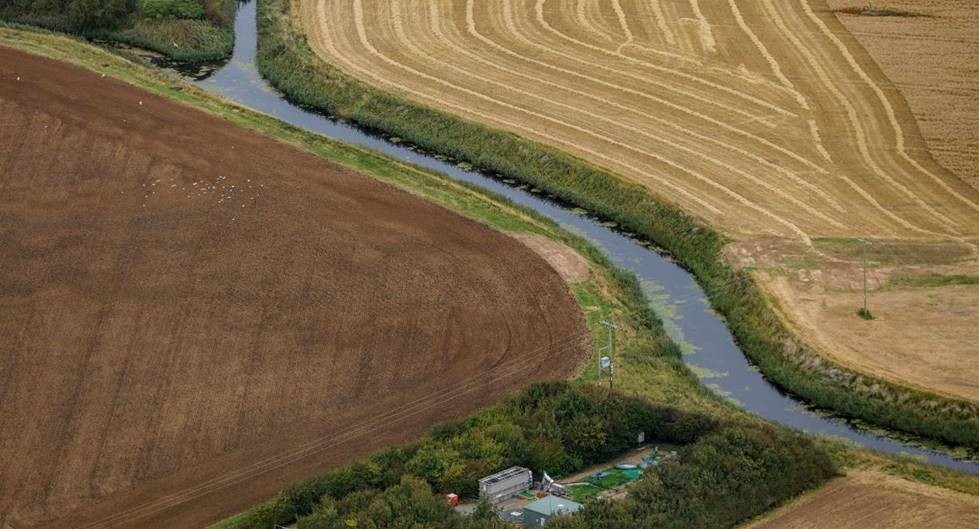
We made significant progress on the construction of the onshore cable route during 2020 despite the Covid-19 restrictions being in place.
Our extensive Horizontal Directional Drill (HDD) programme was completed during Autumn 2020 where we successfully installed 740 individual drill shots made up of nearly 90,000 metres of HDD duct. This was followed by the installation of approximately 250,000m of protective plastic cable ducting linking each HDD location together to form a continues multi ducted system along the entire 57 km cable route.
We have also installed all the High Voltage Alternating Current (HVAC) cable within the ducted system with the last cable pull taking place on 12th September 2020, and all the individual cable lengths have now been jointed.
Our HV testing programme was undertaken during October 2020 meaning that the onshore cables are now fully ready to transfer the electricity produced by the offshore wind turbines to the Triton Knoll onshore Substation.
Hedgerow planting has been completed along the onshore cable route. There has been a 10% net gain to biodiversity across the onshore cable scheme following the completion of replanting.
We have reinstated a large proportion the land used during construction and have already commenced the handover process with landowners to return the land to agricultural use. We have also completed the bulk of the post construction land drainage at all locations. We now only have a few small areas of reinstatement outstanding including at our main project office site near Stickney and at the Landfall. Reinstatement works are currently suspended due to the weather conditions but are set to recommence from March 2021. We expect to have completed reinstatement by the end of May 2021 but, as always, activities are weather dependant.

2020 continues to be an important year for the installation of our onshore infrastructure at Triton Knoll, with cable pulling and jointing works at the centre of our activities.
In February, we achieved a major milestone in the delivery of our works programme when we completed the project’s horizontal directional drilling (HDD) programme. There were a total of 774 individual drills completed at 146 separate locations, the last one being located under the South Forty Foot drain and the railway near Bicker Fen.
It marked the successful delivery of what’s been described as one of the biggest engineering challenges of its kind, to install a 57kms long onshore, underground cable route, avoiding over 300 separate obstacles using individual horizontal direction drills – three times more than what we believe to be the previous UK record for an infrastructure project.(1)
The HDD work was led by our primary onshore cable contractor J Murphy & Sons Ltd, which was supported by UK specialist HDD contractors Eco Drill, JTS and GMAC.
Since our last update, we have completed the Transition Joint Bay excavations and concreting works at the landfall and are very well progressed with the remainder of the Joint Bay construction across the entire onshore cable route.
All cable duct installation has also now been completed, with the final plastic pipe being installed adjacent to the South Forty Foot.
Around 70% of the total 342 kilometres of high voltage cable has now been pulled into the pre-installed duct network.
Jointing of individual sections of cable is continuing, and we have now completed over 50% of all the required joints.
We have excavated and constructed 49 of the 50 joint bay locations, each one containing two joint bays, and have already backfilled the Cable Joints within the joints bays at over 40% of those locations.
The removal of temporary access tracks and bellmouth entry points at completed locations has also started along with topsoil reinstatement works.
Looking ahead, our priorities over the next three months will be to continue with the programme of joint bay excavations, cable pulling, cable jointing and joint bay backfilling. At the same time, we will ramp up the removal of the haul road, bell-mouth entries, post construction drainage and reinstatement works.
We have also completed the pull-in of section 1 of the onshore cable – this is the first section of onshore cable located at the beach near Anderby, which is where the onshore and offshore cables join at the Transition Joint Bay.
Our offshore contractor Boskalis is expected to mobilise to site in the coming weeks, in preparation for the first offshore cable pull onto the beach and which is currently likely to take place in late spring.
FACT FILE
- of JMS/ contractors supporting cable installation – over 250 people
- The HVAC cable is delivered on cable drums, which are typically 4.5m x 3.5m in size.
- Each cable drum weighs between 17 to 26 tonnes and contains between 1,023m to 1,690m of HVAC cable.
- There are 306 cable drums required for the entire Triton Knoll onshore cable route, which collectively adds up to 342km of cable.
- 57km of High Voltage AC (HVAC) cable, stretching from landfall just north of Anderby, to the new Triton Knoll Onshore Substation, at Bicker Fen.
- A 2km 400kV connection links the new onshore substation with the existing national grid substation.
(1) Onshore cable installation
The challenge of installing a 57km onshore cable infrastructure has been described as “unprecedented in the UK” not least of all due to the extent of the engineering required to complete it.
774 separate horizontal direction drills (HDDs) have been carried out at Triton Knoll. Previously, the most ever carried out in the UK to date is thought to be c.100 during the widening of the M25.
The project is rapidly approaching the winter months and so is gearing up for the weather impacts that this time of year can bring.
Throughout late summer and early autumn, the project made fantastic progress including the successfully completion of one of the more complex Horizontal Directional Drill (HDD) on the project, at the River Witham.
The river is one of the region’s primary drainage waterways, stretching over 130 kilometres across Lincolnshire and is in parts over 90 metres wide. A highly specialised HDD was required, of around 264 metres in length and to a depth of around 16 metres, through very difficult ground conditions
- Take a look at our short film, below, to see how Triton Knoll met this engineering challenge.
With the success of the Witham, the project has completed over 99% of the individual HDDs required on the project, with a small number of drills to complete at some key locations along the route To date, specialist teams have successfully installed of over 79,300metres of HDD ducts, including over 740 individual HDD drill shots.
Installation of protective plastic cable ducting has progressed well and is now 99% complete, with the final sections ready to be installed once the HDD works are complete.
So far, almost 50% of High Voltage Alternating Current (HVAC) onshore cable has been installed, and over 20% of the cable joints completed, with the works continuing on target and according to programme.
Throughout, one of the project’s most significant challenges has been to minimise construction impacts on the region’s agricultural heartland.
Martin Knagg, onshore cables package manager explained: “We are absolutely delighted to have already reinstated around 10% of the land used in the cable route which formally began just 12 months ago. This has been very well received by the landowners involved, and the land is already being re-ploughed for the first winter crops to be planted.”
The project will continue reinstatement work in early spring after the less favourable winter weather.
Over 97% of the individual Horizontal Directional Drills (HDDs) required on the project have now been completed. There are 147 separate drill locations each requiring up to six separate drills to accommodate the two circuits of three HVAC cables.
One of the largest HDDs on the project is below the River Witham, stretching around 264 metres in length and to a maximum depth of around 16.35 metres, and installed from August to October 2019.
Installation of the protective plastic cable ducts continues to progress well and is now 90% complete. Weather permitting, cable duct installation along the full cable route is scheduled to be completed by the end of September.
Deliveries of High Voltage Alternating Current (HVAC) onshore cable began in Spring 2019, when drums of between 1,023metres and 1,690metres of HVAC cable arrived at Port of Boston. The deliveries will remain on going until the end of the year.
In July 2019, we installed the first lengths of onshore HVAC cable into the cable ducting, ready to transport power from the offshore turbines into the national grid network and ultimately UK homes and businesses. Since then, we have already completed the installation of over 30% of the onshore cables.
The electrical cable installation is taking place across one large work front which will split into two work fronts towards the end of September, with one working toward the Siemens sub-station in phase 2 and the other working towards the Transition Joint Bay (TJB) at the beach in phase 1.
Finally, thanks to the progress already made, we have been able to begin some of the reinstatement works along the cable route, less than 12 months after beginning onshore construction.

